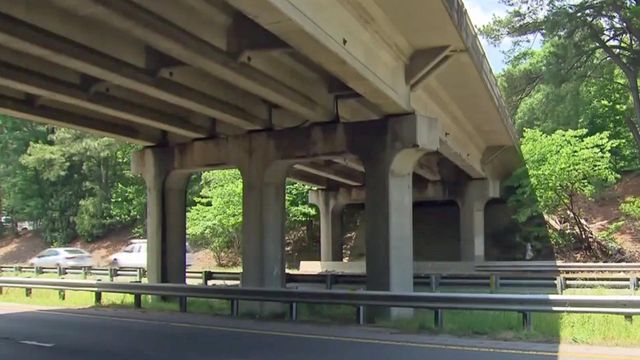Report: NC needs to spend more to save drivers time, gas as Triangle grows
A national report released Thursday finds that many of North Carolina's roads and bridges are in bad shape. In order to keep our state moving in the right direction, more funding is needed for infrastructure improvements.
Posted — UpdatedThe TRIP report, “Keeping North Carolina Mobile: Progress and Challenges in Providing an Efficient, Safe and Well-Maintained Transportation System,” examines road and bridge conditions, travel trends, economic development, highway safety and transportation funding.
North Carolina is in better shape than many states. The report credits Durham, Orange and Wake counties for recent support for a half-cent sales tax to fund a transportation plan that would take some of the stress off the roads. The City of Raleigh is considering a transportation bond for road improvements, and the North Carolina Department of Transportation is working its way through billions of dollars worth of projects.
But maintenance and growth mean there is a constant demand for more.
"I think they could be a lot better," driver Jaime Weathersby said of Triangle-area roads. "You have to dodge potholes and all that."
Carmen Wells agreed. "You have bad road conditions everywhere, holes and potholes," she said.
The TRIP report concluded, "Over the next decade, the North Carolina Department of Transportation (NCDOT) will have funds available for only 17 percent of needed transportation projects."
According to TRIP, the DOT's $1.3 billion budget for 2017 falls about $600 million short of what's really needed, and drivers are paying for it.
"In Raleigh, the average driver loses 31 hours each year stuck in traffic congestion, and cumulatively, the area's drivers waste over 9 billion gallons of fuel because of traffic congestion," according to TRIP spokeswoman Carolyn Bonifas Kelly.
TRIP found 44 percent of North Carolina's urban and major roads are in poor to mediocre condition.
"Many of the state's roads are simply deteriorated and congested," Kelly said.
Key findings of the TRIP report: Keeping North Carolina mobile
- Since 2000, the state’s population has grown 26 percent; Population is projected to increase another 20 percent by 2035.
- Vehicle miles of travel (VMT) in North Carolina increased 29 percent from 2000 to 2016.
- Traffic crashes in North Carolina claimed the lives of 6,668 people between 2012 and 2016, an average of 1,334 fatalities per year.
- North Carolina’s overall traffic fatality rate of 1.23 fatalities per 100 million vehicle miles of travel is higher than the national average of 1.13.
- The traffic fatality rate on North Carolina’s non-Interstate rural roads was more than four times higher than on all other roads and highways in the state in 2015.
- 18 percent of North Carolina’s major locally and state-maintained urban roads and highways have pavements in poor condition.
- 10 percent of North Carolina’s bridges are structurally deficient, meaning there is significant deterioration to the major components of the bridge.
The driving factor is growth. North Carolina is the fourth-fastest-growing state in the country.
North Carolina Chamber President Lew Ebert says investing in bridges and roads is vital to boosting the state's economy and keeping its competitive edge.
"It's not Austin or Atlanta, but we have congestion too," he said. "So, I think companies are busy thinking about congestion, traffic, things like completing (Interstate) 540."
The report suggests that North Carolina needs to invest more in roads and bridges to make sure the Triangle doesn't become another Atlanta or Houston.
• Credits
Copyright 2024 by Capitol Broadcasting Company. All rights reserved. This material may not be published, broadcast, rewritten or redistributed.





